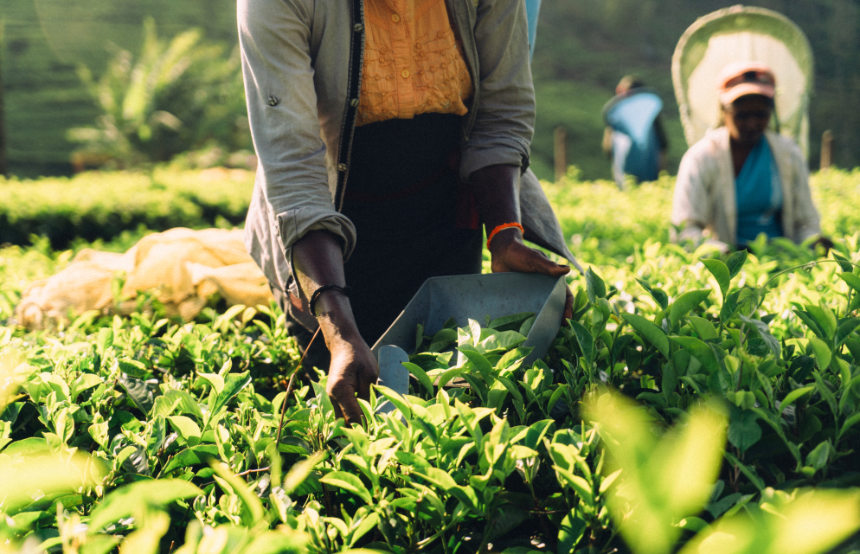The UK has long been known as a nation of tea drinkers. In fact, the warming brew has become so fundamental to our identity that it’s considered a cure-all. Long day at work? ‘I’ll put the kettle on’. Bad night’s sleep? A morning brew will help. British weather getting you down? Curl up on the sofa with a cuppa. The correct method for making a cup of tea is much debated and ‘milk or tea first?’ is a question that continues to divide the nation. Yet, look beyond England’s intrinsic love of tea and you’ll find that it’s equally treasured around the world. Tea is the second most consumed beverage globally, behind water, and first originated in south-west China in 27 BC. From Japanese matcha ceremonies to India’s cherished chai, each country steeps their tea leaves in a slightly different way. While tea traditions around the world may vary, no matter where you go, you’ll find that the drink is synonymous with hospitality, comfort and a moment of calm.
England
Afternoon Tea
England’s tea obsession commenced in the 1600s, when Dutch traders began bringing tea leaves to Europe in large quantities, with the earliest sales in London coffeehouses recorded in 1657. However, it remained a rare drink at this point and few consumed it due to its hefty price tag. Things started snowballing in 1662, when King Charles II’s new wife – Catherine of Braganza – brought over a chest of tea from her homeland of Portugal. The drink subsequently became all the rage among nobility and wealthier members of society, before reaching the masses in 1664, when the East India Company started importing tea to Britain. In 1783, the tea tax was reduced and the country’s craving really took hold – the invention of the teabag in 1908 only fuelled the craze – with milk added at some point along the way to soften the sometimes bitter flavour.
The rather high brow trend of Afternoon Tea is thought to date back to the 19th century, when eating two meals a day was commonplace. Dainty sandwiches, scones and cakes were served alongside pots of tea to tide people over until dinnertime. Nowadays, more than 80% of the population enjoys a brew every day, with around 100 million cups consumed daily.
China
Ancient Traditions
Thought to be where tea first originated, all tea traditions around the world likely stem from ancient Chinese practices. According to Chinese legend, Emperor Shen Nong first discovered tea some 5,000 years ago, however it was likely used as a medicinal remedy long before this. The art of making tea (called Cha Dao) is intertwined with Chinese philosophies of balance and harmony, and the practice of serving it is ritualised in the gong fu tea service. Blessed with diverse climates, myriad types of tea have been able to flourish here, with green, oolong and pu-erh (fermented tea) remaining the most popular Chinese varieties.
Japan
Matcha Tea Ceremony
Matcha lattes have become something of a trend in Europe and the US, offering a caffeinated alternative to coffee that is higher in health-boosting antioxidants. The Japanese are well-versed in these benefits and have been preparing matcha since the 1100s, when a Buddhist monk brought tea seeds back from China and developed a precise practice of preparation, incorporating ideals of Zen Buddhism. This time-honoured tea ceremony known as chado, meaning ‘the way of tea’, still follows a detailed structure and strict set of rules. Ceremonies take place in traditional Japanese tearooms with tatami mats while the matcha powder is whisked with a bamboo brush into boiling water to form a frothy tea.
Morocco
Mint Tea
Trading routes have had an influence on many of the tea traditions around the world, and Morocco is no exception. The drink was introduced to the country after British merchants brought excess tea shipments from China in the mid-1800s. By the 1880s, tea and sugar combined accounted for a quarter of Morocco’s imports. Gunpowder green tea is prepared with mint leaves and sugar to create a brew known as Touareg tea, which is served to guests as an important display of hospitality. The ritualistic art of preparing the tea involves pouring it from high heights into colourful glasses.
India
A Cup of Chai
Come autumn, the taste and scent of chai crops up in frothy drinks (think creamy chai lattes), sugary baked goods and even candles, rivalling pumpkin spice as the flavour of the season. However, this comforting drink comes from more humble beginnings and India’s chai traditions will hopefully revise your view of the warming brew. As the second largest producer of tea in the world today, India certainly knows how to make a cuppa; tea is their most popular drink, with sweet milky chai ubiquitous across the nation. Chai is actually the Hindi word for ‘tea’ and chai vendors (known as chai wallahs) can be found throughout Indian cities, serving black tea with milk, sugar and spices such as cinnamon, cloves, fennel and cardamom. In northern India, ginger is often added for a fiery kick.
Argentina
Yerba Mate
Argentinians opt for an herbal alternative when it comes their tea traditions. Although not strictly a tea (it comes from a South American holly plant also known as Ilex paraguariensis), yerba mate boasts similar benefits thanks its high antioxidant and caffeine content. The Guarani people – indigenous to what is now Paraguay – are credited with developing the method of making yerba mate tea before it was popularised by European Jesuit priests. Argentinian gauchos (cowboys) later adopted the custom and integrated it into daily life, with yerba mate far surpassing coffee and tea as the country’s best-loved beverage. Its bitter taste may not be everyone’s cup of tea, so sugar is often added to take the edge off. The tradition is to drink mate from a hollowed, dried calabash gourd with a metal straw, known as a bombilla.
Written by Luisa Watts














